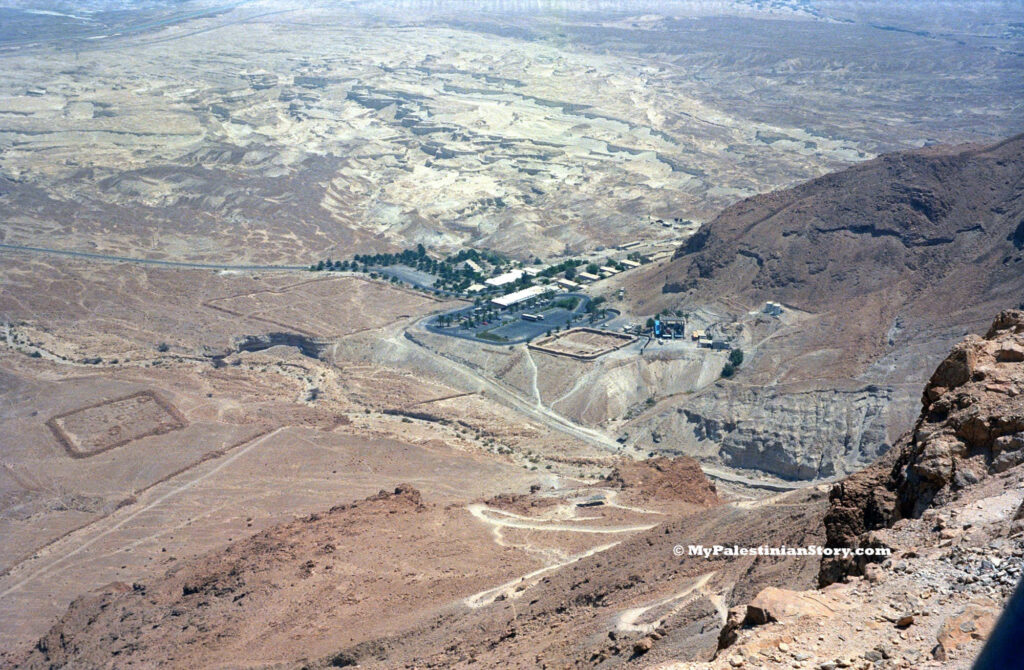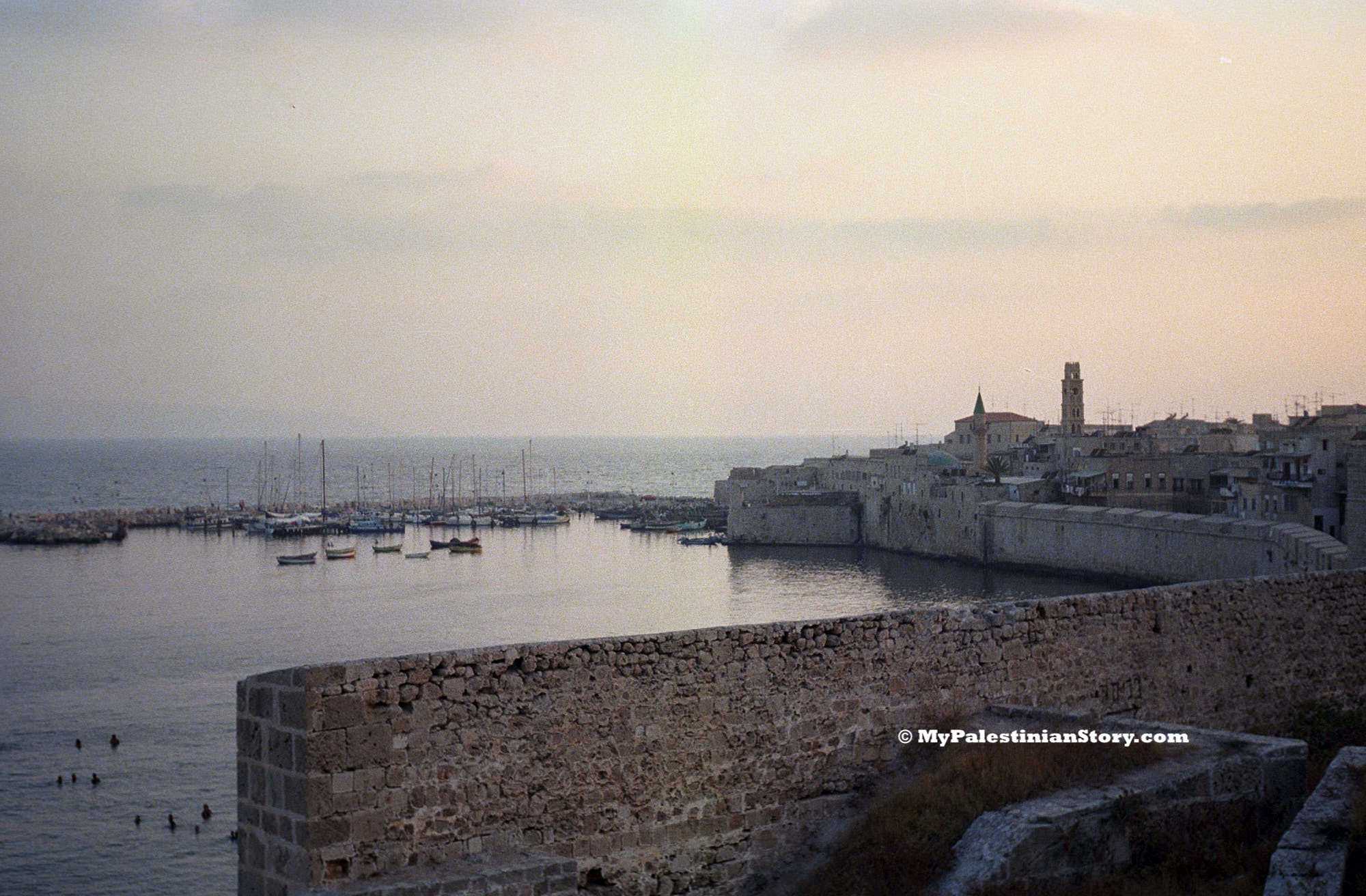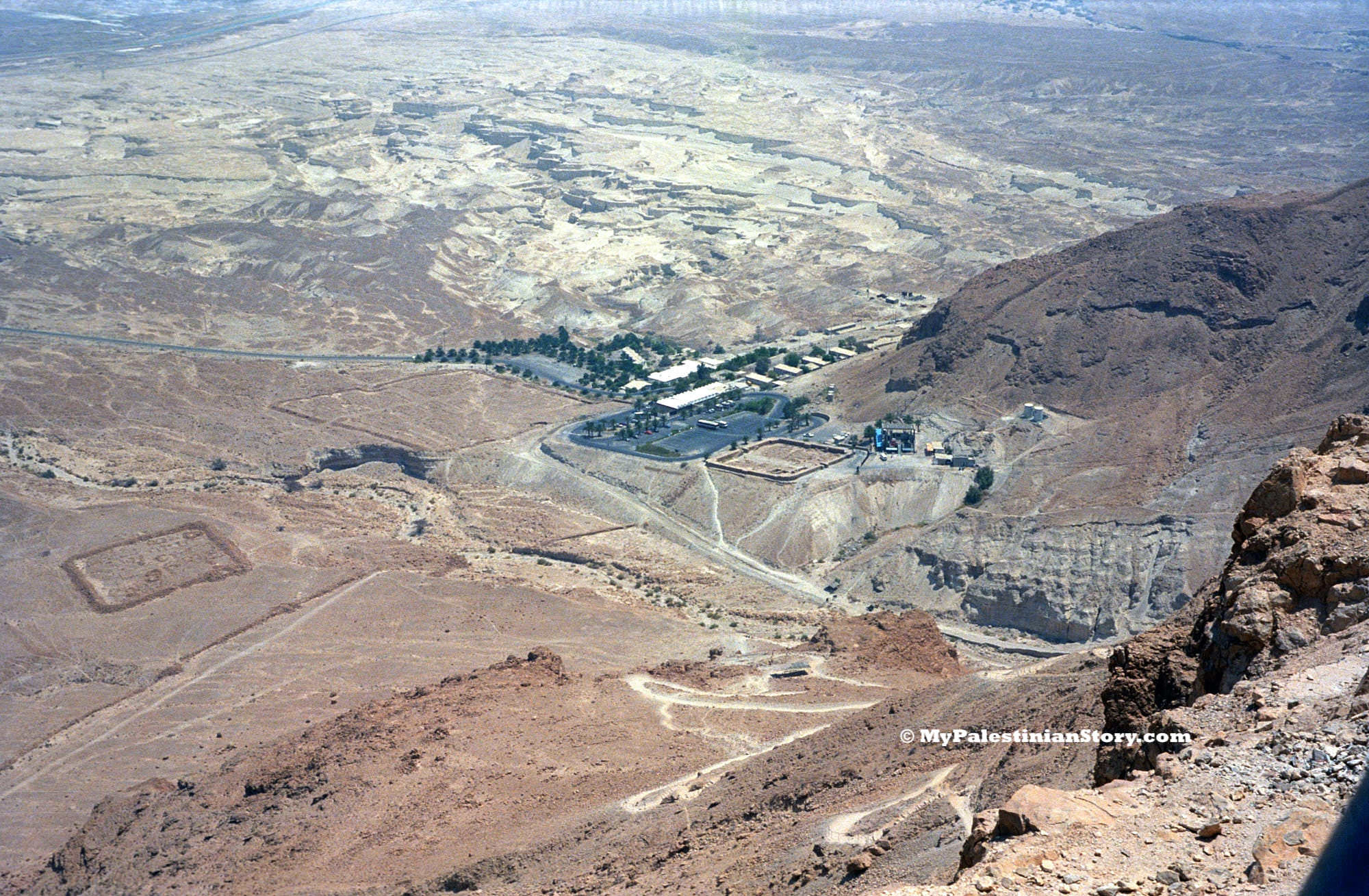It’s been more than a year since my last blog post at the end of which I had promised a second part would follow. It’s taken a little longer than I’d planned but here it is: fifteen months and about three quarters of a pandemic later. (This part is also split in two to keep the length manageable.)
The time has come to write about my first trip to Jerusalem – my first true encounter with my Palestinian family’s past, beyond the confines of oral history.
Part 2.1: Touring Israel—Aug 1986
In the summer of 1986 I went in search of roots. Somewhere I’d seen advertised a long weekend at the Hilton Jerusalem and floated the idea to my mother. She was immediately sold on it. It had been nearly 40 years since they fled their home in Jerusalem to escape the war that partitioned Palestine thus becoming refugees, and she was eager to go back to the city of her birth and to show me where all the stories I had so loved since childhood had unfolded.
In those days my wanderlust was running in high gear—in inverse proportion to my budget!—so I set out six days ahead of her. I grabbed my backpack, sleeping bag, and the Let’s Go Israel & Egypt guidebook and on a Friday evening in August I jumped on the boat from Limassol to Haifa, camping out on the deck for the overnight trip.

I arrived in Haifa on Saturday morning with no plans or fixed agenda other than what my guidebook was recommending. Getting off the boat, the contents of my backpack were scrutinised by a Customs or Security official, down to the last sock. Not having proven themselves noteworthy, they were repacked as meticulously as they had been unpacked by the same official who sent me on my way to explore the Bahá’í Gardens and eat falafel from street vendors. I was surprised to find falafel in Israel, I’d always thought it was an Arab food. Concepts like “cultural appropriation” had yet to enter my awareness.
The Israeli couple who were my hosts at a small B&B in Haifa were every bit as welcoming and hospitable as Let’s Go promised. I used their place as base and every morning would head for the bus station and a different destination. And if the bus was delayed, I’d jump on a different one and go somewhere else.
I met all sorts of friendly and interesting people along the way which for me is one of the perks of travelling solo: new people, new places, new experiences.
On Sunday I took the bus north. Close to the Lebanese border, at Rosh HaNikra (Ras Al-Nakura), I rode a cable car down the steep, white chalk cliffs and explored the sea grottoes. From there I backtracked down the coast until I reached Acre where I was befriended by a young Arab guy, probably in his late teens, who readily assumed the role of my personal tour guide. He was charming, courteous and knowledgeable (and no, he wasn’t after bakshish—probably just bored) and took pains to show me everything worth seeing in this city which is on UNESCO’s World Heritage List. I spent the rest of the day with him, visiting the Al-Jazzar Mosque which dates back to Ottoman times—the legacy of Napoleon’s nemesis: Ahmad al-Jazzar Pasha (aka the Butcher)—and clambering over the rocks and stones of the fortifications constructed by the Ottomans on the foundation of the citadel originally built by the Crusaders. The latter were pretty much the same folk who came to Cyprus at roughly the same time (as were the former for that matter!) In fact, the whole setting, with the harbour next to the fort, was reminiscent of Kyrenia, the magical little town in the north of Cyprus, now under Turkish occupation, where I spent the biggest—and best—part of my childhood, exploring similar fortifications and playing with my cousins in its picturesque harbour.


(Photo by Jules Parisinos)
Even though I’m intensely averse to organised tours, in the interest of efficiency the next day I joined one of the Upper Galilee and the Golan Heights. It would have taken me three days to cover by public transport what we did in one day. It didn’t take me long to recall to what I owed my dislike: the tour guide’s incessant talking and desperate attempts at humour, all of it delivered at high pitch through the coach’s speakers, were nothing short of exasperating. But it was the price I had to pay to see some very interesting sights in this outpost area bordering Lebanon and Syria.
After a short stop in Safad, we continued straight up north until we reached the Lebanese border at Metula, the northernmost town in Israel. Barbed wire and forbidding signs were the main attraction here. With my picture taken at the Good Fence, we then headed east and entered the Golan Heights area which was captured from Syria in the 1967 Six Day War and eventually annexed. Our main stop was at Banias, an archaeological site dedicated to the Greek god Panas, located at the foot of Mt Hermon by the ancient city of Caesarea Philippi. With a nice South African guy we commiserated over our annoying tour guide and explored the site. The springs that flow here feed the Jordan River, in the waters of which my mother was baptised soon after her birth in 1930.

From Banias, we continued deeper into the Golan, passing the medieval fortress of Nimrod and Lake Ram until we reached a spot from where we could observe the now largely abandoned Syrian city of Quneitra which lies in the demilitarised United Nations Disengagement Observer Force Zone between Syria and Israel. Even though I’m no stranger to ghost towns (Varosha in Cyprus being notoriously one) nor to buffer zones given that one runs horizontally across the entire island of Cyprus and indeed splits my own home city of Nicosia in two, nevertheless there was an exciting sense of adventure in gazing across at Quneitra. I suppose other countries’ ghost towns and buffer zones are more thrilling than the ones in your own backyard. The things that people learn to take for granted…
The last stop of our Golan tour was at the Gadot observation point which used to be part of the Syrian fortifications and now serves as a monument to Israel’s fallen soldiers. The whole tour was wrapped in a thin jingoistic veneer, not surprising given that we were being shown an occupied area captured through war, but in my youthful naivety I was not overly perturbed.
Over the next couple of days I was glad to be touring on my own again, although I didn’t lack for company, always making friends along the way. On the coast south of Haifa, in the ancient city of Caesarea which dates back to the Roman times of Herod the Great, I explored in the company of a young Swiss guy the ruins of Pontius Pilate’s palace and the hippodrome, the Roman aqueduct, the ramparts, and the amphitheatre which is practically on the beach.

In Nazareth, even a heathen like myself couldn’t help but visit churches of all sorts: from the imposing Catholic Basilica of the Annunciation to the more modest Greek Orthodox Church of the Annunciation and even the Greek Catholic Synagogue Church (a description that amused me no end piling as it does oxymoron upon oxymoron!)
Locales around the Sea of Galilee demanded a quick review of the religious history that was rammed into us at school: in Tabgha are found the Church of the Multiplication of the Loaves and Fishes and the Church of the Primacy of Peter which commemorates the reinstatement of Peter as chief among the Apostles. A little further to the east, Capernaum was the centre of Jesus’s activities as well as various Apostles’ hometown. And up on the hill, between these two spots, stands the church of the Mount of Beatitudes where Jesus delivered the Sermon on the Mount and which affords beautiful views of the lake.
For a cooling break from all this educational sightseeing in the height of summer, I ventured into the waters of Lake Tiberias for my first ever dip in a lake. Can’t say I was terribly comfortable. Having been spoilt since birth by the crystal clear waters of the Mediterranean Sea, the dark lake with practically no visibility made me nervous. Admittedly, though, it was refreshing.
Finally, on Wednesday afternoon, I bid goodbye to my wonderful Haifa hosts and got on the bus to Jerusalem. As we got closer, a distinct change came upon the landscape: prosperity gave way to poverty and a feeling of abandonment. We did not need a tour guide to tell us we were in the West Bank.
I had booked myself in the Knights Palace, a little hotel within the Old City that was recommended by a friend of the family—a member of what my brother and I cheekily had named “the Al-Fatah”, the group of Greek Palestinians who had taken refuge in Cyprus in 1948 and would often get together to reconnect and reminisce about their Jerusalem lives. The hotel was within my budget and when our friend mentioned that it was next to the Collège des Frères where my Schtakleff great-uncles—Yiayia Vitsa’s brothers—went to school, I knew I had to stay there. Finding it though was no mean feat in the labyrinth of narrow streets that is old Jerusalem within the walls.
My mother wasn’t arriving until Thursday evening so I had one more day to play on my own. So rather than stay in the city, I made for the desert in the south.
It all started because of a T-shirt I saw in the suq, emblazoned with “I climbed Masada”. I wanted it badly. But I have just enough of an obsessive-compulsive temperament that I couldn’t just buy it. I had to earn it. So at 11am on a hot August morning in the Judaean desert… I climbed Masada! Certainly not one of the wisest things I’ve done in my life! And not that I hadn’t been warned. A huge sign at the start of the 2km-long “snake path”, with its 700 steps, offered a litany of warnings about not attempting the hike in the middle of the day (which 11am is perilously close to, if not actually part of), drinking lots of water etc etc.

I arrived at the top drenched in sweat and feeling lightheaded. I had to sit in the shade for a while until my head stopped spinning before I could look at the historical fortifications on this rocky plateau overlooking the Dead Sea. But I earned my right to that T-shirt. Of course, as someone pointed out in the cable car on the way down, I could have taken the transport up and ‘climbed down’ and it would still qualify as a climb. But only for weaklings, in my head. After all, Israel’s elite corps used to get to the top at a trot to be sworn in.
The dip in the Dead Sea that followed my hiking feat was most welcome as well as entertaining. The salinity of this lake, 400-odd metres below sea level, is so high that you can’t actually swim: you float—like it or not. People around me were having their picture taken as they flipped through the pages of a newspaper while floating on their backs on the buoyant waters—the stereotypical tourist experience. I just giggled at the effort needed to push my legs down in order to stand in the water; it was so much easier to float. But that tiny paper cut I’d got a couple of days earlier was burning like crazy in the heavily salinated water. ❖

Slideshow: Touring Israel – Aug 1986
Continued in Part 2.2: Jerusalem















































Great writing Cous! It took me on a nice journey.
Much appreciated!
Wonderfully evocative Marina! Thanks so much for sharing it with me.
Much appreciated, Patricia. Thanks for reading!